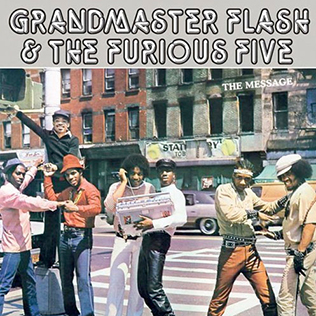


Hip Hop Part 2: The Expansion of Hip Hop (1979-1986)
Hip hop history and culture during the 1980's were groundbreaking. It revolved around massive talent, new fashion, the expression of conscious issues, and a global expansion of its culture. Hip Hop came from New York City, and we appreciate NYC's greatness. New York City is the most diverse cultural city in all of human history. It has more people than any other American city, and NYC has been a great contributor to many societal developments of human history. Yet, hip hop is not just a NYC thing. Hip hop is an international culture, and it belongs to all of us regardless of where we live at. From the power of Salt-n-Pepa to the thunderous sounds from Run DMC, 1980's hip hop was just as good as any hip hop from any era of history. In fact, that time was the blueprint of how many hip hop artists act today. 1980's music in general can be analyzed, and we see that its music is just as good as any music of any time. That is why many legendary hip hop artists now were influenced by '80's icons like Kool G Rap, Melle Mel, Rakim, Kane, MC Lyte, Roxanne Shante, KRS-One, the storyteller Slick Rick, and other artists. That time saw a new, transitional phrase in hip hop history. More artists started to talk about every issue under the sun with more explicit language. This caused debates and controversies that we have to this very day during the Summer of 2020. There was the growth of political rap from the song The Message to Public Enemy's Fight the Power. Women expressed themselves like J.J. Fad, Salt-n-Pepa, Sequence, MC Sha rock, Shante, Queen Latifah, etc. Queen Latifah did the right thing to refute false stereotypes about women and to promote more unity among women in hip hop music.
As early as 1976, DJ Kool Herc's crew called the Herculords had some of the first women MCs named: Pebblee-Poo, Sweet and Sour, and Smiley. These women not only showed great lyricism. They presented the message of wanting their voices to be heard and to be treated as equal human beings. These women inspire the modern day women hip hop artists like Jean Grae, Rapsody, Megan Thee Stallion, Lauryn Hill, Lizzo, No name, Mia , Saweetie, Rah Digga, Shawnna, Kamaiyah, 3D Na'Tee, etc. In fact, many women hip hop artists back then and now rap better than many of the men hip hop artists. This time wasn't without controversy. Groups like 2 Live Crew and N.W.A. came on the scene. Explicit language in music existed for thousands of years. It's not new. Nothing is new under the sun. What freaked many in Middle America out was that black folks on hip hop records were saying these things and were unashamed of their self expression. Many in Middle America hypocritically criticized these hip hop artists, but they were silent on many rock artists glamorizing drug use, sexualizing women, and celebrating nihilism.
Also, some folks are hypocritical to condemn all forms of rap music but are silent on many movies showing violence, rape, murder, torture, cruelty to animals, and other destructive activities. Artists like 2 Live Crew and N.W.A. justified their lyrics by saying that they are only talking about the realities in the streets, and they have the free speech or First Amendment right to say that what they say. The Supreme Court said that they have the First Amendment right to say what they say. Yet, any artist has the right to be critiqued. Whether an artist is in hip hop, rock, gospel, jazz, punk rock, R&B, country, etc., that artist should have that responsibility to deal with the consequences of their actions. Me personally, I don't agree with lyrics that debase women, glamorize violence against innocent people, and calling black folks every name other than a child of God. That is me, and I have the right to my views. Showing the realities of the streets is important (as we shouldn't sugarcoat what is going on in poorer communities), but showing these realities doesn't mean that we have to degrade our Brothers or our Sisters in the process of telling that story. So, these explicit lyrics showing artists have free speech rights (I don't believe in total censorship as these artists are grown ups, and I will believe in the freedom of choice involving musical expression) just as I have my free speech right to disagree with some of their lyrics. I will mention that groups like N.W.A. (even with my disagreements on some of their misogynist, anti-black lyrics) are 100 percent right to oppose police brutality, to oppose racism, and to never be ashamed of where you came from. From MC Hammer's pop hip hop records to the music of Slick Rick or the Beastie Boys, there is never a dull moment in 1980's hip hop. This time saw the rise of the Reagan Presidency. Soon, it will be the 40th year anniversary of the start of Ronald Reagan's Presidency. After 40 years, we see how Reagan was wrong on many issues and promoted a reactionary agenda so extreme that we are dealing with it today. The diversity of hip hop represents its strength. Hip Hop is the most influential music genre of the past almost 50 years now. It is certainly time to evaluate hip hop in a fair way. Hip hop is still here after these decades.


The Early Years of the Artform
After 1979, hip hop expanded into places worldwide. One of the greatest hip hop artists of the late 1970's and 1980's was the pioneer Kurtis Blow. Kurtis Blow appealed to people of many backgrounds. He had respect from musicians, dancers, fans, and people in a wide spectrum of humanity in general. By 1980, the singing group The Commodores took Kurtis Blow on tour. This was historically significant for many reasons. Back in the day, many R&B artists didn't like or respect hip hop. In the early years of hip hop, some considered it a fad that would go away in a few years. Now, we realize that hip hop is not a fad. Kurtis Blow was the first rapper to appear on national television on Soul Train. He released the classic song of "The Breaks" from Mercury Records. The Breaks is the first certified gold rap song. Radio stations increasingly showed hip hop. Urban areas, college campuses, rural places, and other places by 1980 experienced tours from hip hop artists.
This time (of the early 1980's) was when Bob Marley came into America greatly too. In 1980, the Zulu Nation Throwdown Pt. 1 was released from Paul Winley Records by Afrika Bambaataa and Zulu Nation. By 1981, Grandamster Flash released "The Adventures of Grand Master Flash on the Wheels of Steel." This was the first record to capture the sounds of live DJ scratching on wax. Funky 4 plus One (which had woman musician MC Sha Rock) performed their classic hit, "That's The Joint" on NBC's Saturday Night Live on February 14th, 1981. It was the first hip hop group to appear on the show. The Beastie Boys were created in 1981 with Adam Horovitz (King Ad-Rock), Adam Yauch (MCA), and Michael Diamond (Mike D). In 1981, Blondie's Rapture featured rap music (with Fab 5 Freddy and others). It was featured on MTV. Once again, back in the day, MTV refused to show a lot of black artists because of the obvious reason. That is why artists like Prince and Michael Jackson pressured MTV to show videos from a diversity of genres and from black people not just rock artists. The Rapture song had Debbie Harry talking about hip hop pioneers in her verses. The video gave honor to Manhattan's East Village. It showed graffiti legend Lee Quinones and graffiti artist and fine art icon Jean Michel Basquiat. Also, in 1981, Monica Lynch was the first employee at Tom Silverman's newly formed Tommy Boy Records. Lynch would be the President of the label during the 1980's and the 1990's. Monica Lynch helped to launch the careers of many hip hop artists like Queen Latifah, De La Soul, Digital Underground, Biz Markie, and Naughty by Nature.
In 1982, the song the Message was one of the greatest songs in hip hop history. It probably is the song that has the most influential message in hip hop history. It was shown by Grandmaster Flash and the Furious Five. Its lyrics wasn't about partying (which emphasized much of early hip hop music). It was an in your face look into the realities of poor, black and brown neighborhoods in New York City. The song was a forerunner to what gangster rap and more political rap that came about later. Melle Mel shown lyrics that outlined what was really happening in the ghetto like broken glass, poverty, police brutality, angst, anger, pain, and being journalists of the street. The famous hook from the Message include the following lyrics:
"...Don't push me 'cause I'm close to the edge
I'm trying not to lose my head
It's like a jungle sometimes
It makes me wonder how I keep from goin' under..."
In 1982, Afrika Bambaataa and the Soul Sonic Force released the techno influenced on song Planet Rock on Tommy Boy Records. In the same year, Kool Moe Dee beat Busy Bee in a rap battle. Emcee battling after that became a huge part of hip hop culture. Folks wanted to know who had the better lyrics, the better beats, or the better charisma on stage. Hip hop embodied those elements thoroughly. Competition remains an integral part of hip hop culture to this day.


The film Wild Style came bout in 1982. It was produced by Fab 5 Freddy and Charlie Ahearn. The hip hop film showed Cold Crush Brothers, Grandmaster Flash, Grandwizard Theodore, DJ Aj, Grandmixer D.S.T. and others (like Lady Pink, Crash, Daze, Doni, etc.) including members of the Rock Steady Crew. The first hip hop radio station in Los Angeles was KDAY back in 1983. Greg "Mack" Macmillan was the program director who promoted hip hop music. He allowed young DJs to express themselves including a then young Dr. Dre to mix records live on the air. A lot of people don't know that Dr. Dre was a DJ before he became a producer and rapper. 1983 saw Ice T had songs like "Body Rock" and "Killers" that pioneers gangsta rap. The anti-cocaine song "White Lines (Don't Do It)" was released in 1983 by Grandmaster Flash and Melle Mel. The corporate side of hip hop came about into a higher level after Grandmaster Flash sued Sugarhill Records for $5 million over royalties. This was in 1983. Run DMC released "It's Like That." This was in 1983 too. Def Jam was founded by Russell Simmons and Rick Rubin in 1984. What Motown is to soul music, Def Jam, Death Row, Bad Boy, and other record labels are to hip hop music. Def Jam gave voice to many hip hop artists like LL Cool J (who made records in the 1980's like "I Need a Beat"), T La Rock (with his song "It's Yours"), and the Beastie Boys (who made records like Rock Hard). The group called the Fat Boys in 1985 promoted the product of Swatch Watch.
By 1984, hip hop grows involving touring. There was the Fresh Fest concert that featured Whodini, Kurtis Blow, Fat Boys, and Run DMC. It sold $3.5 million for 27 days. Battle rap expands with the UTFO's "Roxanne Roxanne" diss in 1984. Later, other responses came including from a then 14 year old emcee named Roxanne Shante, who was from Queens. She released the song, "Roxanne's Revenge." She is from Queensbridge, and it sold over 250,000 copies. She made the record allegedly at Marley Marl's living room. The Roxanne battle wars expanded the battle rap culture of hip hop music. Roxanne Shante (Lolita Shante Gooden) was recruited by the hip hop producer Marley Marl, radio DJ Jr. Magic, and Tyrone Williams. Marley Marl was one of the greatest hip hop DJs and producers in history. If some one wants to learn about hip hop culture, that person should learn about the contributions of Marley Marl.
UTFO used another Roxanne to answer back to Roxanne Shante. For over a year over 30 records were produced by different sources. Roxanne Shante would be known as an experienced battle rapper. Roxanne Shante used satire, humor, and lyricism to express her thoughts and feelings. In 1984, Dougie Fresh released the Original Human Beat Box. Sugarhill Records goes into bankruptcy and is forced out of business by 1985. Salt n Pepa made their first appearance as being part of the group Super Nature's "The Show Stopper" in 1985 too. The original Salt-N-Pepa had Cheryl James, Sandra Denton, and DJ Latoya Hanson before DJ Spinderella was in the group later on.
By 1986, a then 16-year old MC Lyte recorded her first song called, "I Cram to Understand U (Sam)." She later signed a deal with Atlantic Records. In 1986, Run D.M.C. and Aerosmith merged rap and rock with the song "Walk This Way." Run D.M.C. was very powerful music wise, fashion wise, and they helped to propel hip hop into another level of popularity. In 1986, the Houston based Geto Boys was created by MCs Raheim, Jukebox, DJ Ready Red, and Sir Rap-A-Lot. It was assembled by James Smith (who is from Houston too). The group also had Bushwick Bill. By 1988, the Geto Boys added Willie D and the multi-instrumentalist Scarface (Akshun) in the group. The Geto Boys influenced a large part of the evolution of southern hip hop music.

This image above shows Whodini in recent years.
New Realities
By the late 1970's and the 1980's, new realities existed in hip hop music. That time saw drum machines like the Roland TR-808 drum machine, electro, and sampling from various artists. The popularization of the 808 became one major aspect of hip hop music. In 1982, other music like Hip Hop Be Bop (Don't Stop) by Man Parrish, Whodini's Magic Wand, and Malcolm McLearn's Buffalo Gals inspired future music. There was graffiti art, b-boying, Djing, and rapping. By this time, more hip hop artists made more social messages like Melle Mel, Public Enemy, Run DMC, Paris, and other people. The 1980's saw beatboxing as an integral part of hip hop music. This was shown by Biz Markie, Buffy from the Fat Boys, and of course Doug E. Fresh. Some people suing their mouth to make beats. The growth of hip hop related films like Wild Style, Beat Street, Krush Groove, Breakin, and the documentary Style Wars were very powerful during the 1980's. This time saw the further expansion of women showing hip hop.
Women had a key role in hip hop music since the start of it in the Bronx during the 1970's. There is the paradox. We know what it is. The paradox is that while women played a key role in hip hop music, certain hip hop artists have shown songs with misogynistic or anti-women lyrics along with the sexualization of women in an inappropriate fashion. This is not all of hip hop, but it's a serious problem that has been talked about by former model Melyssa Ford, Janelle Monae, Queen Latifah, and other women. We have to discuss about this issue and eliminate misogyny from hip hop music. It is no secret that many companies refuse to back women artists on the same level as men artists. One large part of hip hop music deals with fashion. Hip hop and fashion go hand in hand. During the 1980's, those in hip hop culture wore Addidas shoes plus shirts, gold chains, specialized hats. Others, in love with hip hop culture, wore Clarks shoes, British Walkers, Pro-Keds, Converse's Chuck Taylor, Pumas, Nike shoes, etc. People also rocked Kangol clothes. Gold door knocker earrings were shown by Roxanne Shante and Salt-N-Pepa. Even to this day, 80's hip hop fashion has been shown today in a nostalgic fashion. Some in hip hop musicians refuse to wear expansive jewelry as a statement against materialism. Therefore, hip hop is a very diversity musical artform.
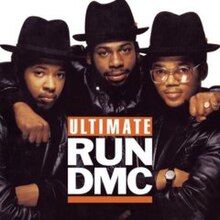

Run D.M.C.
Run D.M.C. is one of the greatest hip hop groups in history, and it is the most influential hip hop group in history. It broke down barriers. It was a group that didn't care about the critics of hip hop as they were unapologetically about human expression. They were based in Hollis, Queens. Its founders are Joseph Simmons, Darryl McDaniels, and Jason Mizell. It was created in 1983. This group was powerful, because it made the crowd know the value both of the MC and the DJ as equals in hip hop. They helped the pave the way for future, new school hip hop artists from Wu Tang Clan to Outkast. The group Run D.M.c. lasted for decades. Run, DMC, and Jam Master Jay changed the whole game. Their album Run-D.M.C. in 1984 became the first hip hop group to have a gold record. Run DMC is the first hip hop group with a platinum record with King of Rock in 1985. In 1986, they made an album to be the first multi-platinum hip hop record. Run DMC was the first hip hop group to have their music videos broadcast on MTV, appear on American Bandstand, and be on the cover of Rolling Stone.
They performed at Live Aid and were nominated for a Grammy Award. They were the second hip hop group to be inducted to the Rock and Roll Hall of Fame. Rev. Run started as a DJ under Kurtis Blow. Simmons and McDaniels performed in places by the late 1970's. Jason Mizzell joined the group too. Rock Box was a record form them that was ahead of its time. They pioneered the fusion of hip hop and rock in music. Run DMC used a more street, less flashy fashion style of Kangol, Addidas shoes, hats, and leather jackets. This fashion influenced hip hop all the way to 2020 and beyond. Run DMC was in the movie Krush Groove too. It was a fictionalized story about the early days of Def Jam. The film had Kurtis Blow, Fat Boys, New Edition, LL Cool J, and Sheila E in it. It had the Beastie Boys too. By the late 1980's with the Golden era of hip hop, they had songs like Run's House, Beats to the Rhyme, and other music. Their album Tougher Than Leather was released in 1988. Down With the King song in 1993 was their further evolution and proof that they had the power to adjust to changing sounds. Jam Master Jay passed away in 2002. He was a legend and the heart and soul of Run DMC. We honor hip hop by honoring Run DMC contributions to the genre. Run DMC made what hip hop is during the 21st century. They are a group that made the transition from the more disco-like records to a more aggressive sound. They made fashion and other cultural influences very well known.
Rest in Power Brother Jam Master Jay.

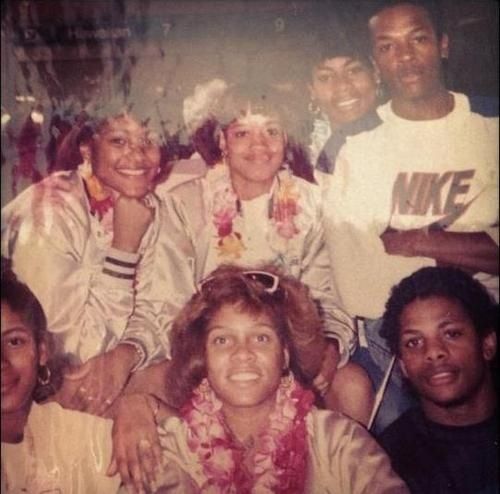

The Diversity of Hip Hop
Hip Hop back during the 1980's was very diverse. It didn't just exist in one Northern city. It was found nationwide and worldwide. In Philadelphia, there was Schoolly D. In the South, artists like the Geto Boys, 2 Live Crew, and other artists were famous. In the West, you had artists like N.W.A., Ice T, and other people. The all women hip hop group called The Sequence came from Columbia, South Carolina. They were created in 1979. They were the first trio women group to sign to the Sugar Hill label. The members of the group were Cheryl Cook (or Cheryl the Pearl), Gwendolyn Chisolm (Blondie), and Angie Brown Stone (or Angie B). All 3 of the artists were high school friends. One of the earliest women MCs is Sharon Green or MC Sha-Rock. She was born in Wilmington, North Carolina and grew up in the South Bronx, New York City. She was born in 1962. People call her the Mother of the Mic. She was in the crew Funky 4 + 1. She was one of the great influencers of modern day rapping. She influenced MC Lyte and DMC. Her book is entitled, "The Story of the Beginning and End of the First Hip hop Female MC Luminary Icon Sha-Rock." The book is about her life, her impact on the world, and her life experiences. Diversity and hip hop go hand in hand.

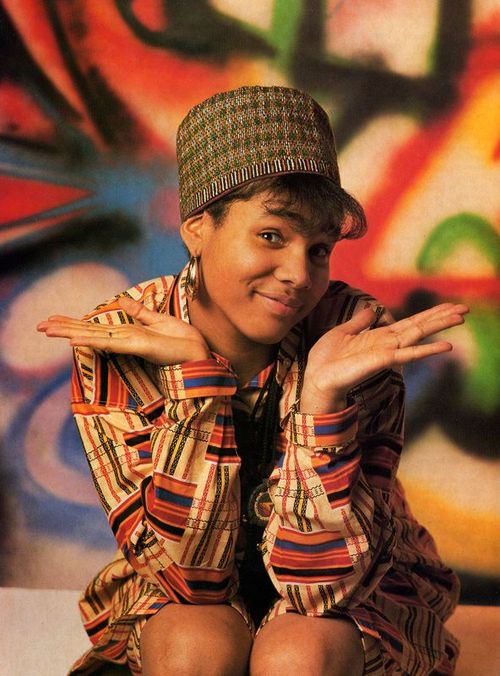
The Start of the Golden Age
By 1986, a new era started in hip hop. It was called the Golden Age from 1986 to 1994. It was a time when there was a total explosion of music, culture, and expression in hip hop music. Hip Hop further grew into new heights of power. Also, corporations sought to exploit it for profit and for other reasons. The Golden era of hip hop allowed diverse regions of America to shine their artists more thoroughly. Musicians from the Midwest, the North, the South, the West Coast, and worldwide shown their great voices to move the crowd plus to motivate society to change for the better. It was a new school movement that had conscious artists, more street artists, pop artists, and other human beings. It is characterized by its diversity. That time saw people as diverse as Queen Latifah and DJ Jazzy Jeff and the Fresh Prince. It was a time of innovation. New singles came about that redefined the genre more and more. Groundbreaking albums existed along with debates about various political plus social issues. The quality of the music was focused, inspiring, and very potent. It was a time where a myriad of styles of hip hop were abundant. If you like lyricism and political records, there was Rakim, De La Soul, and Public Enemy. If you like to relax, there was MC Hammer and Will Smith. If you like pro-black messages, there was A Tribe Called Quest, Arrested Development, Brand Nubian, and the Jungle Brothers. Samples were used. These samples came from jazz, funk, soul, rock and roll, and other musical types. The golden era of hip hop had some of the greatest advances in lyricism or rapping technique. Big Daddy Kane, KRS-One, Rakim, Chuck D, and other artists perfected lyricism. That time represented the essence of what hip hop is which is about the full expression of human beings about their own personal experiences in a creative fashion. In the near future, the full outline of the Golden Age of hip hop will be shown here.
Peace.
By Timothy
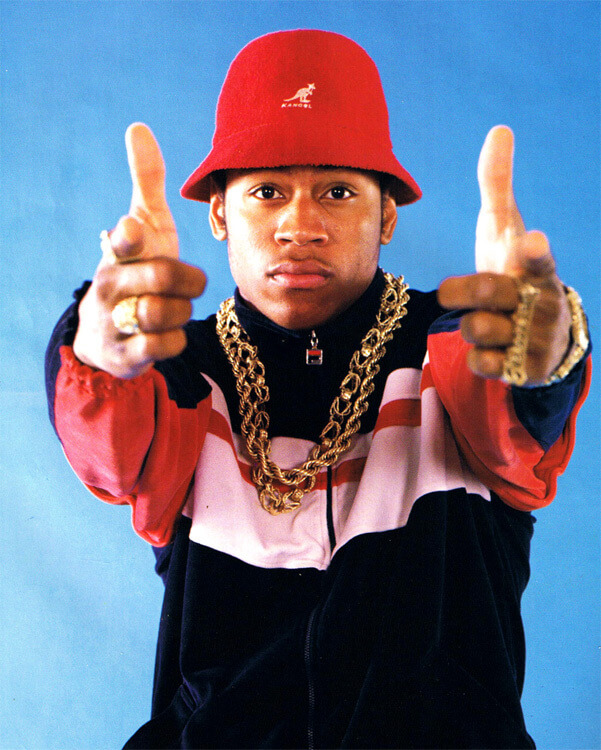
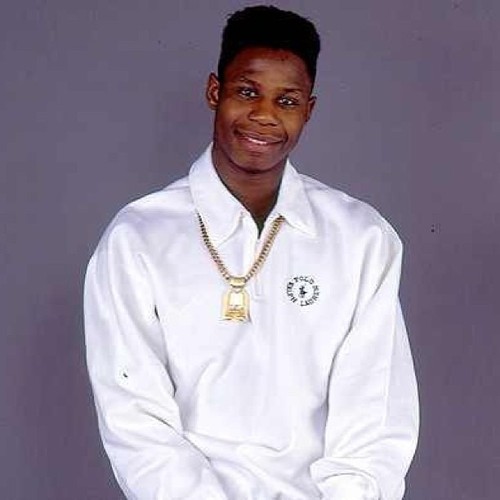
No comments:
Post a Comment